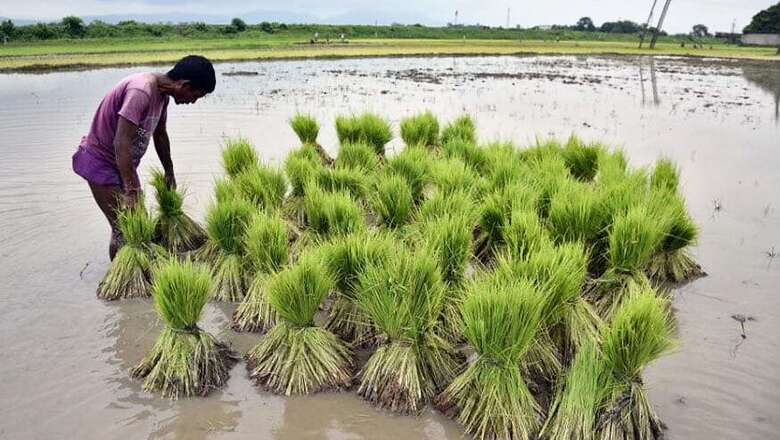
views
New Delhi: Highlighting the water crisis in the country, the Economic Survey report has warned that India will be the global hot spot for ‘water insecurity’ by 2050 if urgent measures are not adopted to avert the looming disaster.
The document, tabled in Parliament by finance minister Nirmala Sitharaman on Thursday, gave alarming statistics about water use by the agricultural sector and emphasised on the need for adoption of improved methods of irrigation.
Citing the Asian Water Development Outlook, 2016, it said that almost 89 per cent of groundwater extracted in India is for irrigation. There is a major concern whether the present practice of groundwater use can be sustained as the depth of the groundwater level continues to drop, it said.
As per the survey, agriculture remains the predominant occupation in terms of number of people employed. It is dependent highly on water. So, appropriate mechanism needs to be framed for economical use of water among small and marginal farmers.
“The cropping pattern in India is highly skewed towards crops that are water intensive,” observed the report. The reason for this is the government’s incentive structures that exists towards such water-intensive farming.
MSP, heavily subsidised electricity, water and fertilizers have played a significant role in the misalignment of crop patterns in the country. “The water guzzlers, paddy and sugarcane, consume more than 60 per cent of irrigation water available in the country, thereby reducing water availability for other crops,” says the report.
The Economic Survey has highlighted the divergence between land productivity and irrigation water productivity in the major sugarcane producing states in India reflecting the urgent need to focus on irrigation water productivity to raise agricultural productivity.
States like Tamil Nadu, Karnataka, Maharashtra and Andhra Pradesh which have high land productivity tend to have very low irrigation water productivity, reflecting inefficient use of water and the need to change the cropping pattern.
The Economic Survey has suggested that improved irrigation technologies should be adopted as they will have a critical role in increasing irrigation water productivity.
“While adoption of micro-irrigation systems (MI) is one of the possible ways to improve water use efficiency, it can be seen that the States with penetration of MI systems and improved adoption of micro irrigation systems have almost 40 to 50 per cent savings in energy and fertilizer consumption,” says the report.
Further, it added, “Though, the costs of installation of MI systems can be a disincentive unless subsidies are given by the government to small and marginal farmers, it needs to be examined whether the procurement supported systems which are resource inefficient in terms of subsidies and water use, can be replaced with MI supported cropping patterns and systems which will maximize irrigation productivity and resource use efficiency.”
The survey has talked about the study which has found there are ‘bright spots’ which can be models for sustainable water use in agriculture. A combination of measures which suit the local agro-economic context need to be applied to improve irrigation productivity in agriculture which will reflect sustainable water use in agriculture.
In this regard, focus in agriculture should shift from ‘land productivity’ to ‘irrigation water productivity,’ says the survey. Therefore, devising policies to incentivize farmers to adopt efficient ways of water use should become a national priority to avert the looming water crisis.




















Comments
0 comment